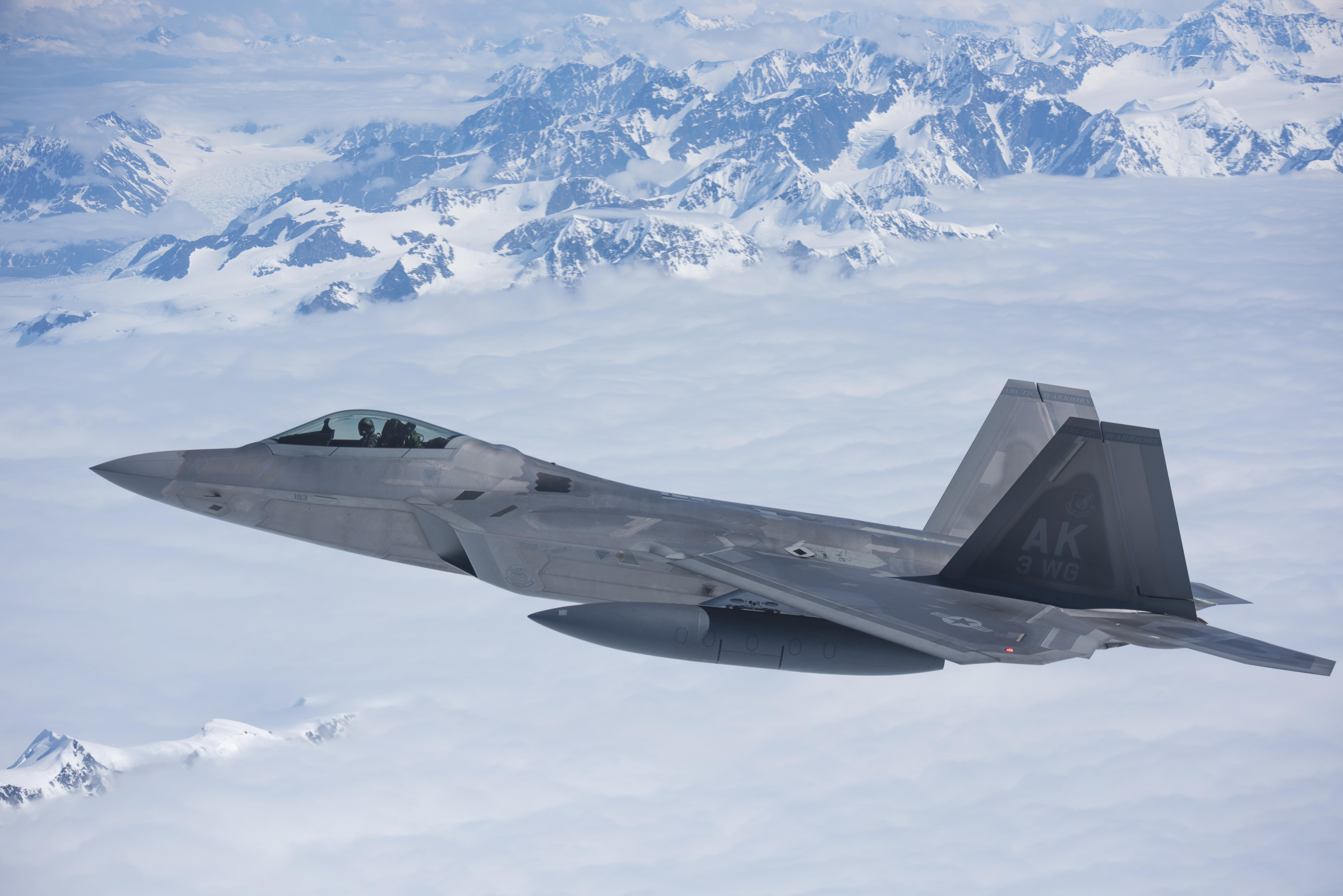U.S. jet shoots down unidentified object over Alaska’s Arctic waters
The object, flying at 40,000 feet, was characterized as a threat to civilian air traffic.

A fighter jet shot down an object over U.S. territorial waters in Alaska’s Arctic, near the Canadian border, the Biden administration said on Friday.
The object, flying at 40,000 feet, was detected on Thursday by ground radar and tracked as it approached and entered U.S. airspace, and NORAD dispatched aircraft to observe and identify the object.
“And then the ultimate decision was made, based on the reasonable threat to civilian air traffic, to take it down,” Air Force Brig. Gen. Pat Ryder told reporters on Friday.
The commander of NORAD and NORTHCOM has the authority to take down an object like this, but only if it’s posing a “potential hostile intent or actions,” Ryder said.
“However, given the fact that this aircraft was — or, excuse me, this object — was operating to pose a reasonable threat to civilian air traffic, after consultation with the secretary [of defense] and the president, of course, the president on our advice, gave the order to take it down and we took it down.”
Two F-22s were dispatched, but only one aircraft took the shot, he said. The military took steps to confirm the object was uncrewed before shooting it down.
The debris landed on ice, and efforts to recover it are under way, Ryder said.
Temporary airspace restrictions were put in place near Point Thomson, about 60 miles east of Prudhoe Bay, on Friday evening. A search-and-rescue aircraft was seen on flight trackers near Prudhoe Bay.
It is not yet clear where the object originated, whether it was sent by a nation or individual, or what its purpose was.
The object was about the size of a car, making it smaller than the high-altitude balloon reported to be a Chinese surveillance device shot down last weekend.
Incidents like these highlight the importance of monitoring the Arctic, said Troy Bouffard, director of the Center for Arctic Security and Resilience at University of Alaska Fairbanks.
“These have been really actually ideal incidents for us as a nation,” he said. “This is a real-world example of the challenges that we have stated since day one,” including domain awareness in the region.
“It draws attention to how and why that is such a difficult problem. And it should help, obviously, energize that discussion and put more attention toward this.”
Yet it was unsurprising that the object on Friday was tracked easily, since current capabilities can quickly detect threats at 40,000 feet, he said. That makes this situation different from tracking the Chinese balloon, which flew at a higher altitude. “Obviously, 60,000 feet higher is going to be a problem because we don’t have that same coverage,” Bouffard said.
“Today was an example of [how] that system works very, very well.”
The object was unlikely to have come from Russia, which is “busy,” Bouffard said, pointing instead to China or possibly North Korea.
On Thursday, Sen. Lisa Murkowski, a Republican from Alaska, criticized the Defense Department’s delay in shooting down the Chinese balloon, which was first detected over the Aleutian Islands before flying through Canada and across the United States.
“Alaska is the first line of defense for America, right?” she said during a Senate appropriations defense subcommittee hearing. “If you’re going to have Russia coming at you, if you’re going to have China coming at you, we know exactly how they come. They come up, and they go over Alaska… We see it first.”
The administration’s delay in taking down the balloon gave the impression that Alaska is prioritized differently from the rest of the country — a message other nations might interpret as permissive, she said.
“Seems to me the clear message to China is: ‘we’ve got free range in Alaska, because they’re going to let us cruise over that until it gets to more sensitive areas,’” Murkowski said.
“At what point do we say a surveillance balloon, a spy balloon coming from China, is a threat to our sovereignty? It should be the minute, the minute, it crosses the line, and that line is Alaska.”
This article has been fact-checked by Arctic Today and Polar Research and Policy Initiative, with the support of the EMIF managed by the Calouste Gulbenkian Foundation.
Disclaimer: The sole responsibility for any content supported by the European Media and Information Fund lies with the author(s) and it may not necessarily reflect the positions of the EMIF and the Fund Partners, the Calouste Gulbenkian Foundation and the European University Institute.
